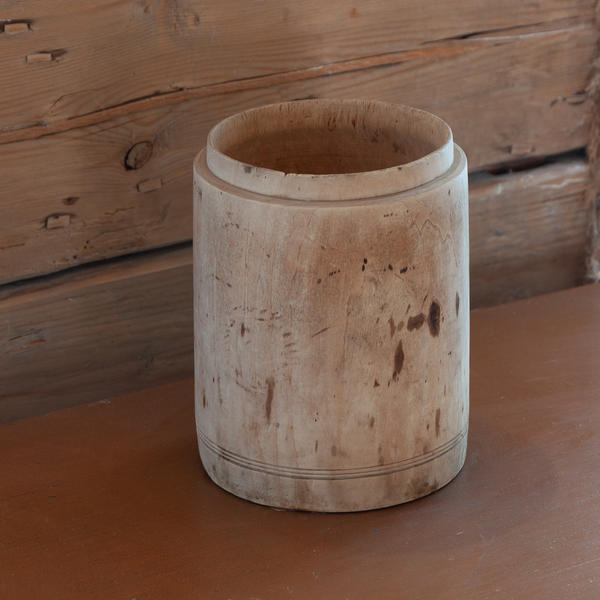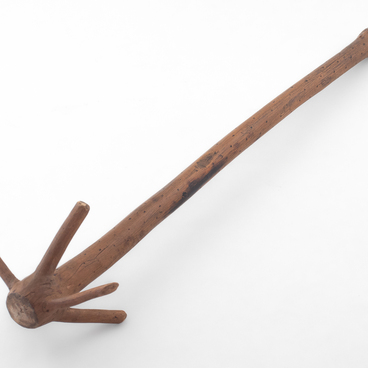A salt cellar is a container for salt. The exhibit which is presented in the collection is round in shape, with an extension at the bottom, is made of wood and misses a lid. This item belonged to Anna Ilyinichna Ulyanova, married name Elizarova, the elder sister of Vladimir Ilyich Lenin.
In the late 1960s and early 1970s, in connection with the creation of the Apartment-Museum of the Ulyanov Family, Claudia Pavlovna Anokhina provided great help in replenishing the collection with original family heirlooms. She was an old acquaintance of Anna Ilyinichna and the wife of one of her pupils, Dmitry Egorovich Baramzin.
Claudia Pavlovna lived in Anna Ilyinichna’s Moscow apartment at 9 Manezhnaya Street, apartment 11. Augustina Dmitrievna Dernova, a researcher at the museum, who at the time was working on creating the museum’s collection, visited Claudia Pavlovna in the summer of 1968. Claudia Anokhina managed to preserve the apartment’s furnishings, personal belongings, books, photographs and letters. When she found out about the creation of the exhibition, she donated to the future museum a number of things that belonged to Ulyanova-Elizarova and the Ulyanov family, including a wooden salt cellar. On October 26, 1969, with reference to the Soviet news agency TASS, a news item was published on the front page of the newspaper Pravda mentioning this event.
Wooden salt cellars were considered a common household item, were made in various shapes and decorated depending on local tradition: they were cut with a knife and hollowed out with an ax. The material was birch, spruce, and pine wood. They were also woven from roots and birch bark. In central Russia and the Volga region, “chair”-salt cellars were created in the form of a cuboid box with a hinged lid and a high back wall. The surface of such salt cellars was decorated with a finely carved pattern, the back wall was adorned with patterns depicting birds, roots, and church domes. Most of the salt cellars had a lid.
The attitude to this kitchen accessory in Russia
has always been special. Tatyana Evgenyevna Lonchinskaya, an employee of the
Higher School of Folk Arts, notes,



